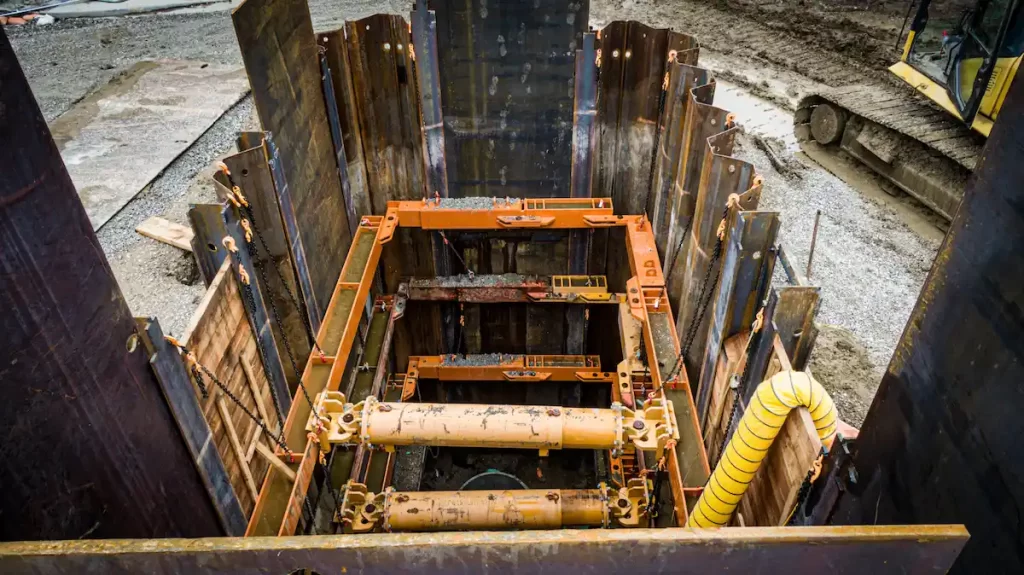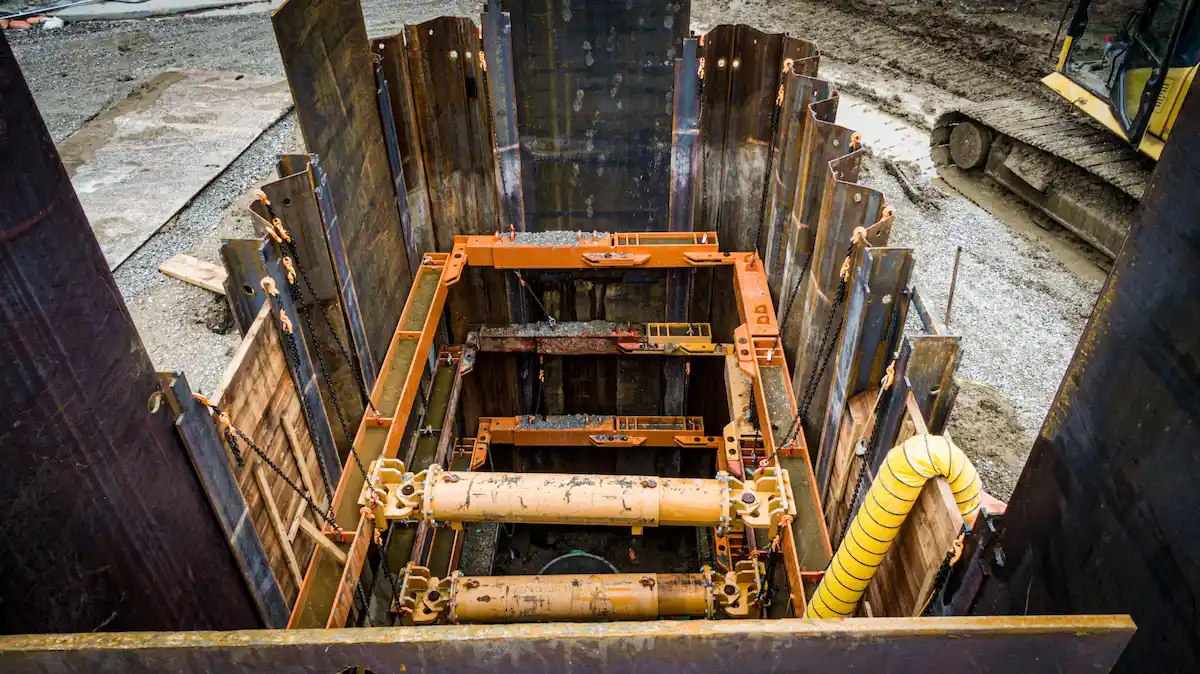Trenching is a common practice in construction, but it comes with inherent risks, particularly regarding cave-ins. Trench shields, also known as trench boxes, are crucial for safeguarding workers and preventing accidents. We’ll explore essential tips for using trench shields effectively to enhance trench safety.

- Understand Trench Shield Basics:
Trench shields are structural systems installed in trenches to protect workers from cave-ins. They typically consist of sidewalls, end walls, and a top, forming a protective enclosure within the trench. Understanding the components and purpose of trench shields is fundamental for safe installation and use. - Conduct Proper Site Assessment:
Before deploying trench shields, conduct a thorough assessment of the trench site. Evaluate soil conditions, depth, width, and potential hazards. Soil stability is particularly critical, as unstable soil poses a higher risk of collapse. Adjust the trench shield size and configuration based on site conditions. - Ensure Proper Installation:
Proper installation of trench shields is paramount for their effectiveness. Follow manufacturer guidelines and OSHA regulations meticulously. Ensure that trench shields are securely positioned and braced to withstand soil pressure. Inspect all components for damage or defects before use. - Train Workers on Safe Practices:
Provide comprehensive training to all workers involved in trenching operations. Educate them on the importance of trench safety and the proper use of trench shields. Emphasize the significance of following safety protocols, including wearing personal protective equipment (PPE) and adhering to excavation procedures. - Monitor Soil Conditions Continuously:
Soil conditions can change rapidly, especially in regions prone to inclement weather. Continuously monitor soil stability throughout the trenching process. Use tools such as penetrometers and shear vane testers to assess soil strength and detect potential hazards. Implement additional support measures if soil conditions deteriorate. - Implement Rescue Procedures:
Despite precautions, accidents can still occur in trenching operations. Establish clear rescue procedures and ensure all workers are familiar with them. Provide training on trench rescue techniques and designate individuals responsible for initiating emergency response protocols in the event of a cave-in or other accidents. - Regular Maintenance and Inspection:
Trench shields must undergo regular maintenance and inspection to ensure their integrity and functionality. Inspect shields before each use for signs of damage, corrosion, or wear. Clean and lubricate moving parts as necessary, and promptly address any issues identified during inspections.
Conclusion: Trench shields play a vital role in safeguarding workers and preventing trench-related accidents. By understanding their proper use and implementing effective safety measures, construction professionals can minimize risks and create a safer work environment. Prioritize trench safety by adhering to these essential tips when using trench shields in your next excavation project.

